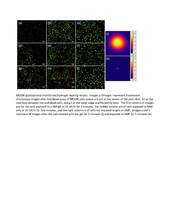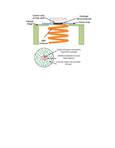Highlight
Hydrogel Nanocomposites for Hyperthermia Applications
Achievement/Results
NSF funded researchers at the University of Kentucky have developed hydrogel nanocomposites to be used in cancer therapy applications. IGERT faculty, Drs. Zach Hilt and Kim Anderson along with IGERT trainee, Samantha Meenach have collaborated the past 2 years on this project as part of the University of Kentucky IGERT program on “Engineered Bioactive Interfaces and Devices”. This IGERT program combines the expertise of researchers working on synthetic architectures with researchers with expertise in cell/protein interactions with surfaces.
The hydrogel nanocomposites developed by this group are comprised of a soft, flexible polymeric tissue with entrapped iron oxide nanoparticles that are capable of heating upon exposure to an alternating magnetic field (AMF). This allows the gels to be used for hyperthermia (40-45C temperature exposure) treatment of cancer which increases the efficacy of conventional chemotherapy or radiotherapy treatments. Specifically, Poly(ethylene glycol)/iron oxide-based hydrogels were fabricated and showed power and system-dependent heating upon exposure to an AMF. The hydrogels exhibited tailorable swelling properties and NIH 3T3 murine fibroblasts exposed to the system showed favorable cytotoxicity indicating their biocompatible nature.
A proof of concept demonstration was done to show the ability of the hydrogels to kill cancer cells via a high temperature (65°C) thermoablative heating mechanism. M059K glioblastoma multiforme (brain cancer) cells were exposed to hydrogels heated to 65°C in an AMF. Controls were done to show the effect of the field alone on the cells. Fluorescence imaging of the cells after heating via AMF exposure showed cell death in the area where the cells were exposed to the hydrogels whereas cells outside of this area were alive. Cells exposed to the field only were healthy and alive indicating their safe use in the field. The achievements of this project were made possible by interdisciplinary research done in multiple labs with direct input from many undergraduate and graduate student researchers.
Address Goals
This research demonstrates a unique application of hydrgel nanocomposites. The work was accomplished through interdisciplinary research among multiple labs and combined the expertise of researchers working on synthetic architectures with researchers with expertise in cell/protein interactions with surfaces. A number of graduate students and undergraduate students were involved in this project which cultivates a world-class, science and engineering workforce.







